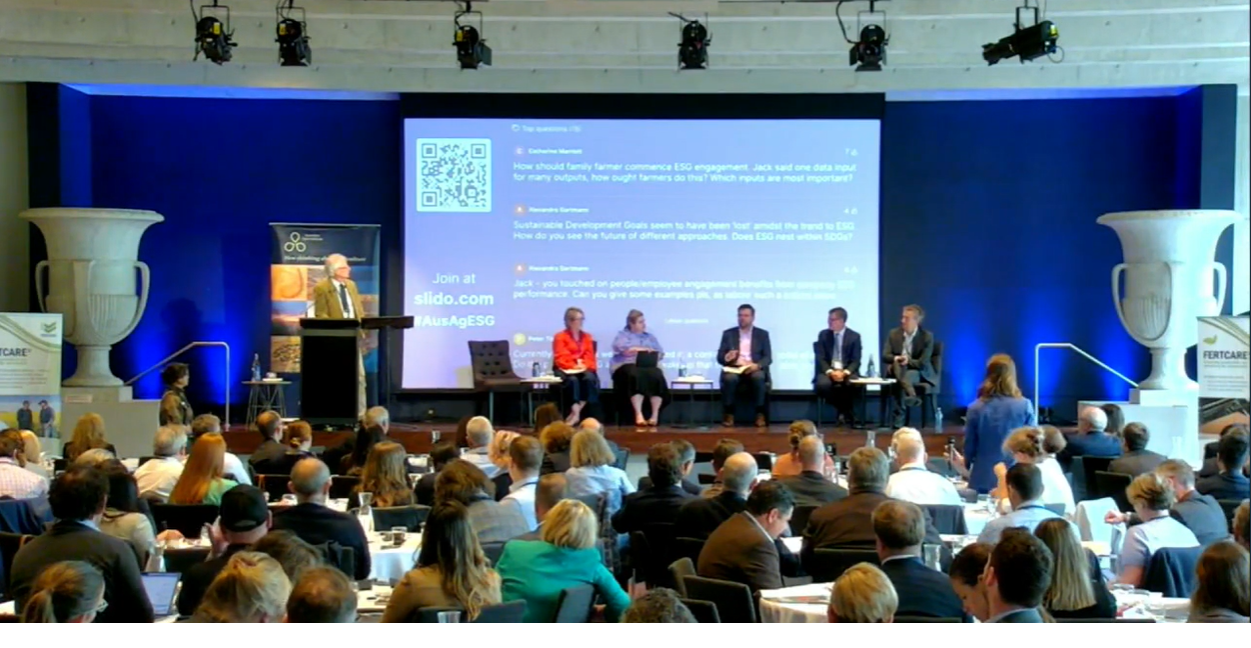03 November 2022
Insight from: Robbie Sefton
ESG is an acronym that’s increasingly common in our vernacular, but one that many may still not be too conversant with. Did you mean ECG? No, but like an electrocardiogram that tests the condition of the heart, ESG conveys its own conclusions around the vitality and viability of a business or company, and by extension, an industry or even national economy.
It stands for environmental management (E), social responsibility (S) and business capital/ governance (G) and refers – in the purest sense – to the three key factors when measuring the sustainability and ethical impact of an investment in a business or company. It can enhance a business’ or company’s social licence, while also identifying potential risks, and on the flipside, opportunities.
Its increasing importance to, and impact on, our agriculture sector and what that means for the sector as we move towards the goal of a $100 billion industry by 2030 – and beyond – prompted the Australian Farm Institute (AFI) to hold a conference earlier this month around the “capability and capacity of Australian agriculture to meet sustainability goals in ESG”.
A raft of finance, government, agriculture and agribusiness experts addressed participants and AFI is to be congratulated for attempting to shed light on this often complex ESG discussion. As a result, there were some interesting insights and ideas shared that show the potential that exists for our agriculture industry if it embraces and drives the concept.
One of the things that did become apparent from the farmer perspective, is the confusion and duplication that currently exists in terms of sustainability frameworks and reporting. Several primary producers were among the conference speakers and they highlighted the need for a consistent and coordinated standard, language and output from the industry. They spoke about a multitude of benchmarking programs, frameworks, initiatives and standards all designed to drive ESG outcomes, but the current result is often confusion around where farmers can go to get good advice and support.
Probably not surprising given ESG is still relatively new and something many are coming to terms with, but the take-home message hopefully for the many people of influence in the room was that this is an area where real improvements can be made, in relative quick time, for enormous benefits.
The conference emphasised there are many emerging tools, systems and frameworks for ESG reporting – to assist farmers with the adoption of these practices – but we also heard the rarest thing available in the market is farmers’ time, so to put increasing requirements at the farm level will be a barrier to developing ESG opportunities across the industry. To support farmers tap into ESG and related opportunities, there will need to be capacity building across the industry.
And, what is also an inescapable truth is that farmers and the industry need to accept this is the future and get on board with ESG procedures and requirements, because to pursue a different course is to miss the proverbial boat. No-one is suggesting this kind of transformational change is easy or without disruption, angst and upheaval along the way, but it is essential, particularly when other industries around the globe are starting to use the ESG ‘operating manual’ to their own advantage. To paraphrase from an article I read about ESG and agriculture recently, some will grasp the new opportunities from the transformation that is underway, while others will be left behind. We can’t afford to be the latter.
To read this article in The Land Newspaper, go to New world of ESG has its challenges, but our agriculture industry can’t afford not to be on board, says Robbie Sefton | The Land | NSW

Australian Farm Institute (AFI) Roundtable held in October around the “capability and capacity of Australian agriculture to meet sustainability goals in ESG”.




